The arrival of blocks of flats in St John's Wood - St John's Wood Court, Abraham Davis and Hercule Poirot
The arrival of blocks of flats
Mansion flats appeared in London at the end of the nineteenth century. For example, Artillery Mansions in Victoria advertised for tenants in 1895, offering bachelors ‘ single rooms with services for £20 per annum ; strangely those for ladies cost £25 for a similar room. There were also blocks for families who hoped for a simpler way of life than having a large house with many servants, although people wanted a mixture of modern efficiency with old fashioned elegance. This brought problems of design as to where the still necessary servants should be housed – should it be one in each flat in a bedroom off the kitchen with its own WC or should they be en masse in the attic or basement? A separate back staircase was thought necessary for the servants to provide proper segregation of classes entering the building, but it might give an opportunity for a servant to slip outside for an assignation; even a fire escape might help a servant to do this. If the living rooms were at the front of the flat it meant the kitchen was probably a long corridor away past the bedrooms and the food would be cold before it reached the table, but if the living rooms were nearer the kitchen then guests might have to go past the bedrooms and bathrooms to reach them which was thought unsuitable. But flats gradually became more popular and by the early part of the 20th century St John’s Wood contained probably a greater number of unoccupied houses than any other suburb round London. Up a giddy lift and near the stars, with electric lights let into the ceiling, electric bells throughout, hot and cold water night and day, private restaurant, a gold-laced porter and no taxes, are luring the sharp sighted suburban out of his old villas and secluded gardens which therefore fall into emptiness. (Crosland, The Suburbans 1905)
Abraham Davis (1857 – 1924) developer
Abraham Davis was a speculative builder in St Johns Wood who unusually took a leading part in post-1919 public housing provision in the borough. One of six sons of Wolf Davis, a furrier in Whitechapel, who all built flats and shops over the East End before turning to the West End; they built mainly for investment , not selling on for quick cash. Abraham, who had high building standards, was the one who made the greatest impact on the London streetscape . His company, Service Flats Ltd founded in 1918 to promote the Davis Patent system, built over 2,000 privately financed flats in St Johns Wood and Maida Vale for prosperous tenants with his company, the Central London Building Company, doing the construction work.
St Johns Wood Court
In 1914 Grove End Court had been the first mansion block on the Eyre estate and in the same year Abraham Davis had an agreement with the Eyre estate for erecting two separate blocks of high class flats on the site of existing houses which were demolished. (draft building agreement WCA765/308).
Residents began to move into St John’s Wood Court in 1921. There were lifts and porters and there were kitchens and dining rooms on the top floor which were used by residents, who were coming to terms with the effects of living with fewer servants. (The dining rooms were later turned into private flats, and penthouses were built on the top of the block during the 1990s.)
The butterdish in the photographs is eight and a half centimetres in diameter. It has a navy rim with two gold stripes. On the back it says “CENTRAL KITCHEN, ST. JOHN’S WOOD COURT, W.W.7” in gold lettering. It was found by Hamilton Morrin at the bottom of one of the lift shafts.
Agatha Christie, Hercule Poirot and a story based on life at St John’s Wood Court
Immediately after the end of the First World War Agatha Christie and her husband Archie established their first married home at 5 Northwick Terrace NW8, (now demolished ) , when Colonel Christie was working at the Air Ministry. Their second floor flat cost two and a half guineas a week and despite only having two rooms and a bed which seemed full of large iron lumps they were looked after by Bartlett, Archie Christie’s batman, and Mrs Woods, a cook general who lived in the basement. Agatha learned book keeping and shorthand and began writing stories. After Agatha discovered she was pregnant in 1919, the Christies moved to a furnished flat, whose address she did not reveal, but it was most likely St John’s Wood Court. Just before their daughter was born they moved to W 14.
The Adventure of the Italian Nobleman (published in 1924 but probably written a few years earlier) is set in a block of flats called Regents Court in St Johns Wood Road which has the latest service devices including a lift with attendant. Poirot and Hastings go there because a tenant has been murdered after having two mysterious men to dinner. The flat has a square lounge hall and dining room with a round table set with white lace mats, and a small kitchen, but there is also a hatch in the wall with a service lift to a kitchen on the top floor. Tenants can order a meal by telephone which is sent down one course at a time and the dirty dishes are sent up in return. This group have ordered from the a la carte menu and have had soup julienne, filets de sole normande, beef tournedos and rice soufflé . When Poirot goes up to the kitchens he is told all the hundreds of plates and dishes used that evening have already been washed up.
Social housing
The final phase of Abraham Davis’s career was in social housing. From about 1909, starting in St Pancras with several red brick blocks of flats in and around Judd Street, he developed a system of companies. After the First World War some took a form close to that of a present-day housing association and so were eligible for cheap government loans. One of these, the London Housing Society, which Abraham masterminded, could borrow money from the Public Works Loan Commission at lower than market rates.
Abraham’s daughter Ruth inspired his foundation of Lady Workers’ Homes Ltd, which created flatlets for single professional women, at first in Abbey Road and Grove End Road, St Johns Wood. In 1911 the Abbey Road home provided communal facilities of dining-rooms, drawing room, entertainment hall, reading room, restaurant, bedrooms, central heating and bathrooms, plus 26 self contained flats, all at modest rents. The Society claimed that the society is its own architect, a claim borne out by a resident’s letter saying other flats I have seen seem to be designed by architects who have no idea of the needs of the educated woman of small means, only recognising the artisan’s wife who does all her own washing and cooking.
The company’s second project was York Street Chambers. This was not, at first glance, dissimilar to other mansion blocks in Marylebone although a stone plaque announced it as being exclusively for ladies. The 50 residents had a choice of flats (bedrooms with separate sitting rooms) or bed-sitting rooms, which were both relatively commodious arrangements. The basement had both private and large communal dining rooms as well as servants’ rooms ostensibly providing housing for another less visible class of working women. These layouts suited an emerging class of professional women with a genteel balance of private accommodation that allowed for respectability and independence, which also had some communal spaces that fostered networking, support and camaraderie. Indeed the first women members of the RIBA, sisters Ethel and Bessie Charles, ran their architectural practice from here.
Addison House was built in 1920 and is included in the St Johns Wood Conservation area on the basis of architectural and historical interest. The block is named after Christopher Addison, the UK’s first Minister of Health who pioneered social housing after World War I. As Robert Indge has pointed out, it should be noted that Dr Christopher Addison laid the foundation stone of Addison House, which is found to the right of the front entrance, and therefore the historical significance is greater than just being named after him.The 1919 Addison act offered subsidies for housing workers and this block was designed exclusively for single women in the caring professions. Men were not admitted until 1956 although an exception was made during World War II when applicants to be RAF pilots were temporarily accommodated while attending the RAF selection centre, which was then housed in the EMI Abbey Road Studios.
Abraham Davis was a leading member of the St Pancras Borough Council, and central to its response to the ‘Homes for Heroes’ campaign of 1919. However his health was failing, and almost his last professional project was to design a parade of shops in Swains Lane, Highgate, the first building on the Holly Lodge Estate which he had bought from the widower of the Baroness Burdett Coutts, and which after his death afforded the site for a large expansion of the Lady Workers’ Homes. He is commemorated in an inscription on a memorial fountain there, in the garden between groups of the Lady Workers’ flats. The motto ‘Work wait win’ was espoused by Abraham Davis, and was formerly found on buildings of his in the East End.
(with thanks to Rebuilding London in London Journal 29, 2004 p62 -84)

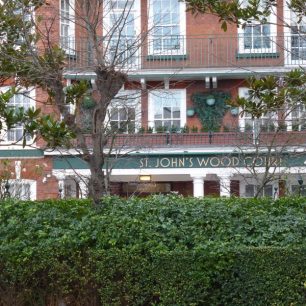
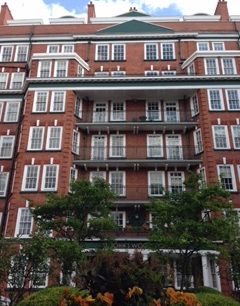
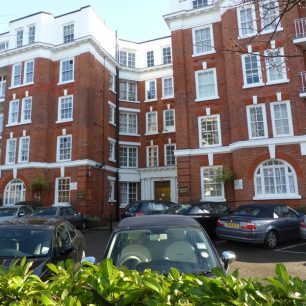
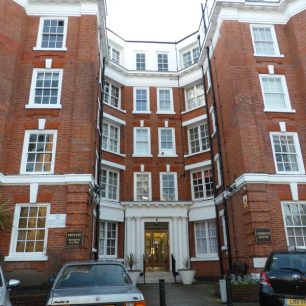
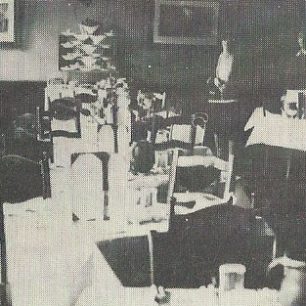

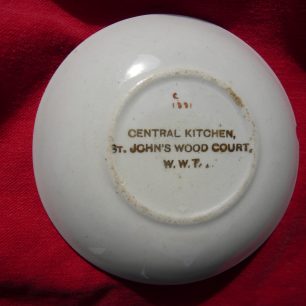
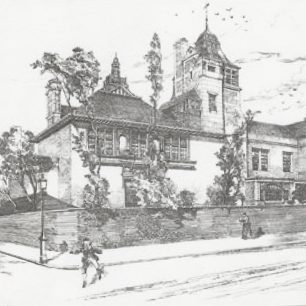



Comments about this page
My great aunt Sophia Worlock and Thomas Worlock were living at 75 Hamilton Terrrace, St. Johns Wood during the first part of the 1900s from 1885-1920. There is a block of flats just north of the junction with Hall Rd and I have seen no 75. I understand the numbering has been changed over the years. Is this the no.75 where they would have lived or can you say what no.75 is now.
Any help would be appreciated if you can
Kind regards
Clive Allen London N13
It should be noted that Dr Christopher Addison laid the foundation stone of Addison House, which is found to the right of the front entrance. Therefore the historical significance is greater than just being named after him.
Add a comment about this page